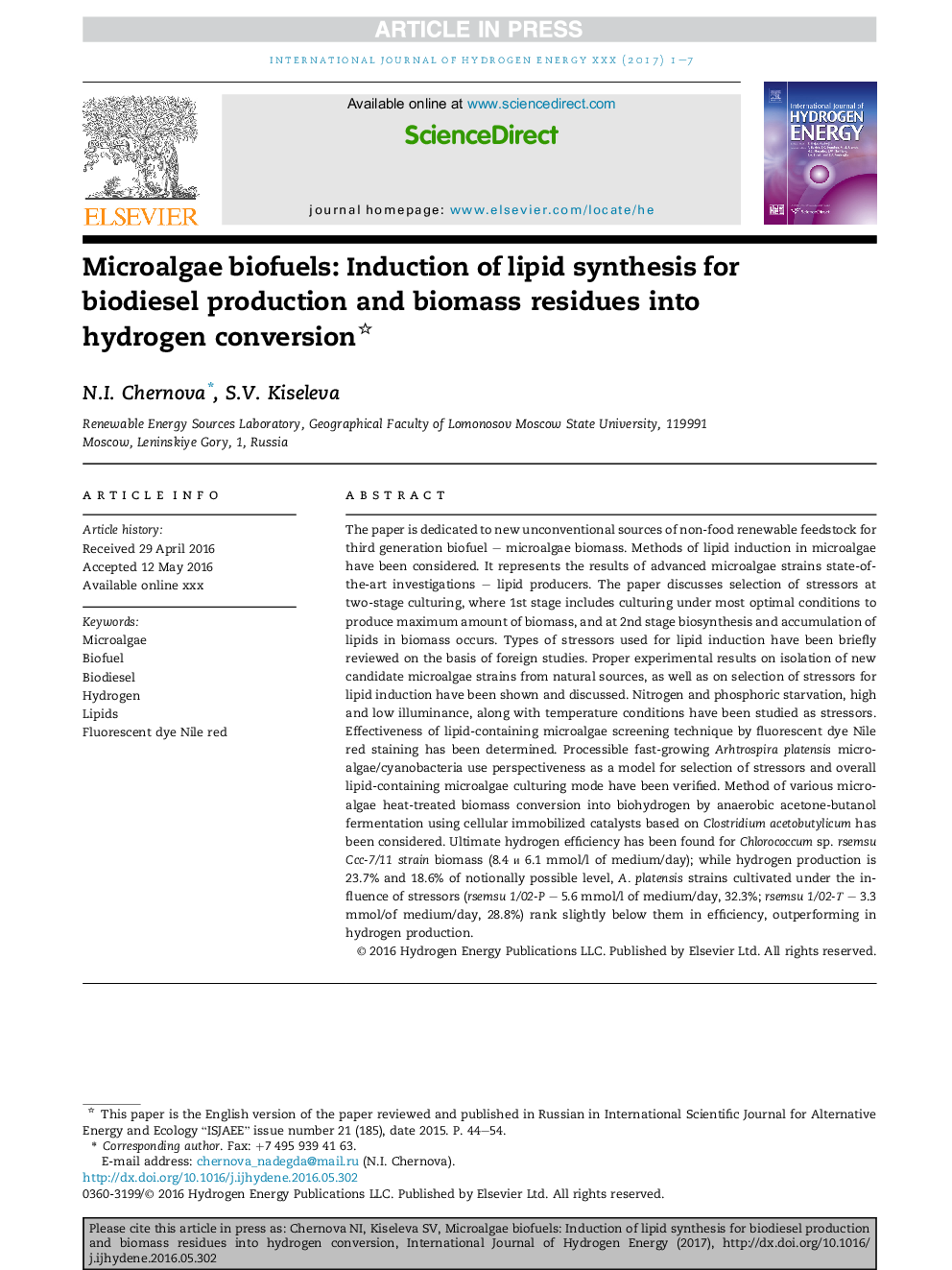| Article ID | Journal | Published Year | Pages | File Type |
|---|---|---|---|---|
| 5148496 | International Journal of Hydrogen Energy | 2017 | 7 Pages |
Abstract
The paper is dedicated to new unconventional sources of non-food renewable feedstock for third generation biofuel - microalgae biomass. Methods of lipid induction in microalgae have been considered. It represents the results of advanced microalgae strains state-of-the-art investigations - lipid producers. The paper discusses selection of stressors at two-stage culturing, where 1st stage includes culturing under most optimal conditions to produce maximum amount of biomass, and at 2nd stage biosynthesis and accumulation of lipids in biomass occurs. Types of stressors used for lipid induction have been briefly reviewed on the basis of foreign studies. Proper experimental results on isolation of new candidate microalgae strains from natural sources, as well as on selection of stressors for lipid induction have been shown and discussed. Nitrogen and phosphoric starvation, high and low illuminance, along with temperature conditions have been studied as stressors. Effectiveness of lipid-containing microalgae screening technique by fluorescent dye Nile red staining has been determined. Processible fast-growing Arhtrospira platensis microalgae/cyanobacteria use perspectiveness as a model for selection of stressors and overall lipid-containing microalgae culturing mode have been verified. Method of various microalgae heat-treated biomass conversion into biohydrogen by anaerobic acetone-butanol fermentation using cellular immobilized catalysts based on Clostridium acetobutylicum has been considered. Ultimate hydrogen efficiency has been found for Chlorococcum sp. rsemsu Ccc-7/11 strain biomass (8.4 и 6.1 mmol/l of medium/day); while hydrogen production is 23.7% and 18.6% of notionally possible level, A. platensis strains cultivated under the influence of stressors (rsemsu 1/02-P - 5.6 mmol/l of medium/day, 32.3%; rsemsu 1/02-Т - 3.3 mmol/of medium/day, 28.8%) rank slightly below them in efficiency, outperforming in hydrogen production.
Related Topics
Physical Sciences and Engineering
Chemistry
Electrochemistry
Authors
N.I. Chernova, S.V. Kiseleva,
